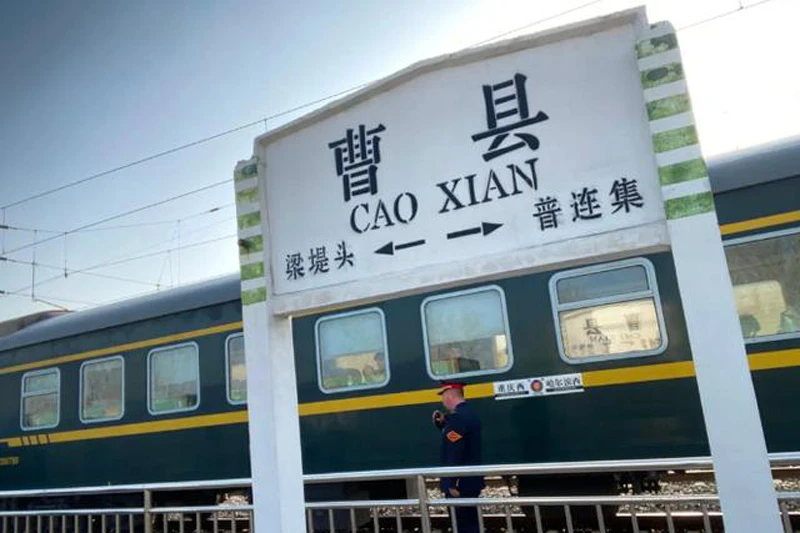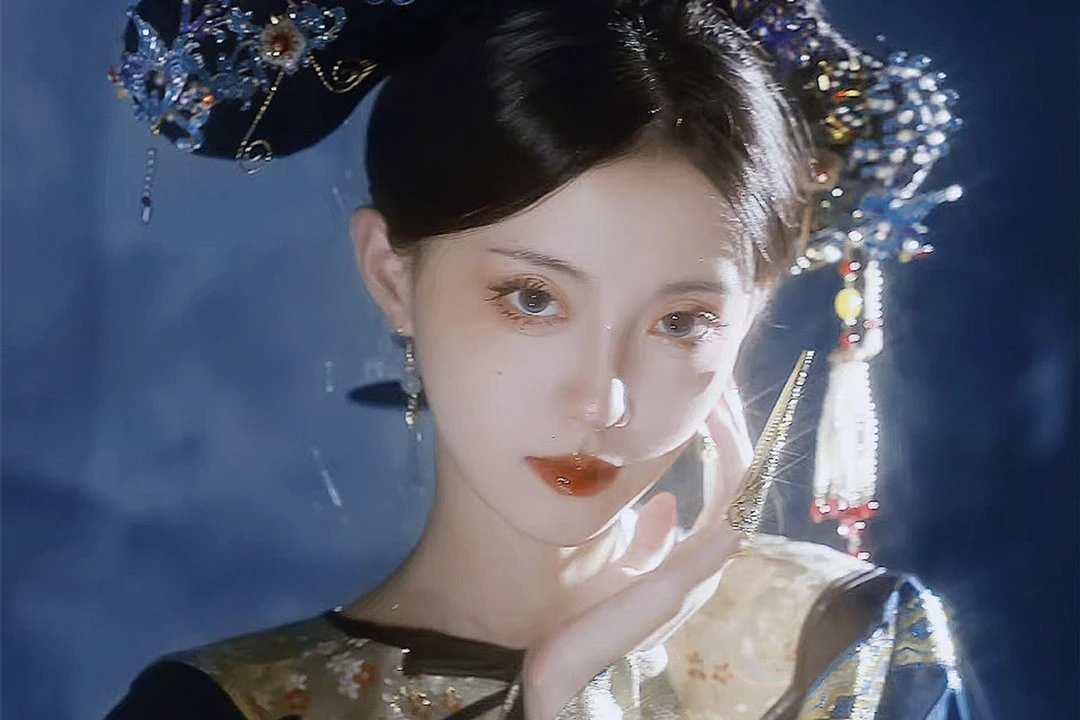In recent years, the popularity of Hanfu, the traditional clothing of the Han Chinese people, has skyrocketed across the nation. At the forefront of this cultural resurgence is CaoXian, a small town in Shandong Province that has earned the reputation of being “China’s Largest Hanfu Production Base.”
The meteoric rise of Hanfu garments, particularly the horse-face skirt (ma mian qun), has been nothing short of remarkable. According to the “Douyin E-commerce Women’s Consumption Trend Data Report,” over the past year, orders for horse-face skirts on the Douyin e-commerce platform soared by an astounding 841% year-on-year. During the most recent Chinese New Year festivities, CaoXian witnessed a staggering 300 million yuan in sales of dragon-themed celebratory Hanfu outfits, with the overall sales of horse-face skirts reaching nearly 900 million yuan in the first quarter alone.
This unprecedented demand has sparked a flurry of online discussions, with trending topics such as “The Horse-Face Skirt Becomes the New Spring Festival Wardrobe Sensation,” “CaoXian’s Horse-Face Skirt Sales Reach 300 Million Yuan but Still Can’t Meet Demand,” and “400 University Students Return to CaoXian to Sell Horse-Face Skirts” dominating social media platforms.
In the midst of this Hanfu craze, many have flocked to CaoXian to witness the phenomenon firsthand. The CaoXian Railway Station has become a bustling hub, welcoming visitors from across the country.
At the heart of this vibrant industry lies the CaoXian Luoruxian Hanfu Exhibition Hall, a sprawling 50,000 square meters facility that boasts a comprehensive range of amenities, including exhibition spaces, live-streaming studios, production factories, design centers, warehouses, logistics hubs, and even staff apartments. The sheer scale and grandeur of this complex are a testament to the county’s unwavering commitment to the Hanfu revival.
One such visitor is Sun Ding, a video production company executive from Zibo, who hopes to capitalize on the Hanfu trend by establishing an online store specializing in the garments. Sun Ding’s journey to CaoXian was sparked by his realization of the market’s untapped potential during the Pingyao International Film Festival in October of the previous year, where he noticed a proliferation of Hanfu photography studios throughout the ancient city.
The rise of CaoXian as the epicenter of Hanfu production can be traced back to 2019, when the county began mass-producing Hanfu garments in response to the growing demand fueled by historical television dramas and short videos celebrating the traditional culture. By 2023, CaoXian’s Hanfu sales had surpassed 7 billion yuan, accounting for approximately 40% of the national Hanfu market share.
“Nowadays, the prices of Hanfu garments have become more accessible,” says Sen Sen, a Hanfu enthusiast. “It’s no longer unimaginable to find high-quality outfits priced between 100 and 200 yuan, or even a few thousand yuan for more intricate designs.”
The surge in Hanfu popularity can be attributed, in part, to the influence of social media influencers and Key Opinion Leaders (KOLs) who have helped promote the traditional garments through their platforms. Videos showcasing modern Hanfu styles and transformations frequently garner millions of likes on platforms like Douyin, captivating audiences and expanding the traditional clothing’s reach across demographics.
For entrepreneurs like Yao Chixing, the owner of the renowned Luoruxian Hanfu brand, this resurgence has been a long time coming. Yao and her husband, Li Zilei, a returnee from studying in Japan, established their Hanfu business in 2019 after being inspired by the Japanese tradition of wearing kimonos during holidays.
“At first, we faced challenges due to the small demand and limited expertise in Hanfu designs and fabrics,” Yao admits. “CaoXian’s Hanfu industry went through a period of complaints and boycotts, forcing us to transform our approach by hiring professional designers, purchasing copyrights, and establishing our own design teams.”
The turning point for CaoXian Hanfu industry came in 2021 when a Douyin influencer brought attention to the local market, followed by a pivotal moment in 2022 when Yao and Li gifted 4,800 Hanfu outfits worth 500,000 yuan to frontline workers battling the pandemic in CaoXian. This act of generosity sparked a surge in demand, leading to a flurry of orders from experience stores and scenic areas across the country.
Today, CaoXian boasts an integrated Hanfu industrial chain, encompassing raw materials, design, production, sales, and ancillary services. According to Zhang Longfei, director of the CaoXian E-commerce Service Center, the county is now home to 2,282 Hanfu enterprises and nearly 100,000 industry practitioners, forming a comprehensive 5-kilometer industrial cluster.
“We want to convey the concept that if you want to buy Hanfu, you come to CaoXian,” Zhang Longfei states. To achieve this goal, the county is encouraging enterprises to focus on both online and offline channels, such as establishing physical exhibition halls and participating in offline exhibitions.
One such effort is the second annual CaoXian Hanfu Culture Festival and 2024 Spring/Summer New Product Launch, held from March 28 to April 3, in collaboration with Douyin E-commerce. The event featured 50 local Hanfu companies showcasing their latest designs on a massive elliptical runway, attracting widespread attention and generating over 51 million yuan in on-site orders.
As CaoXian’s Hanfu industry continues to thrive, the county’s entrepreneurs are now grappling with the challenge of transitioning from mere “brand names” to establishing true “brands” with distinct design philosophies and identities. Zui Yuduo, a leading horse-face skirt manufacturer, acknowledges this ongoing journey, stating, “We are still not a brand, but merely a brand name. We need to learn from others and absorb feedback from Hanfu enthusiasts, museums, and e-commerce platforms to cultivate our brand identity gradually.”
With an unwavering spirit of hospitality and an eagerness to share their entrepreneurial stories, the people of CaoXian are determined to propel the Hanfu industry to new heights, ensuring that this cultural renaissance leaves an indelible mark on China’s fashion landscape.


